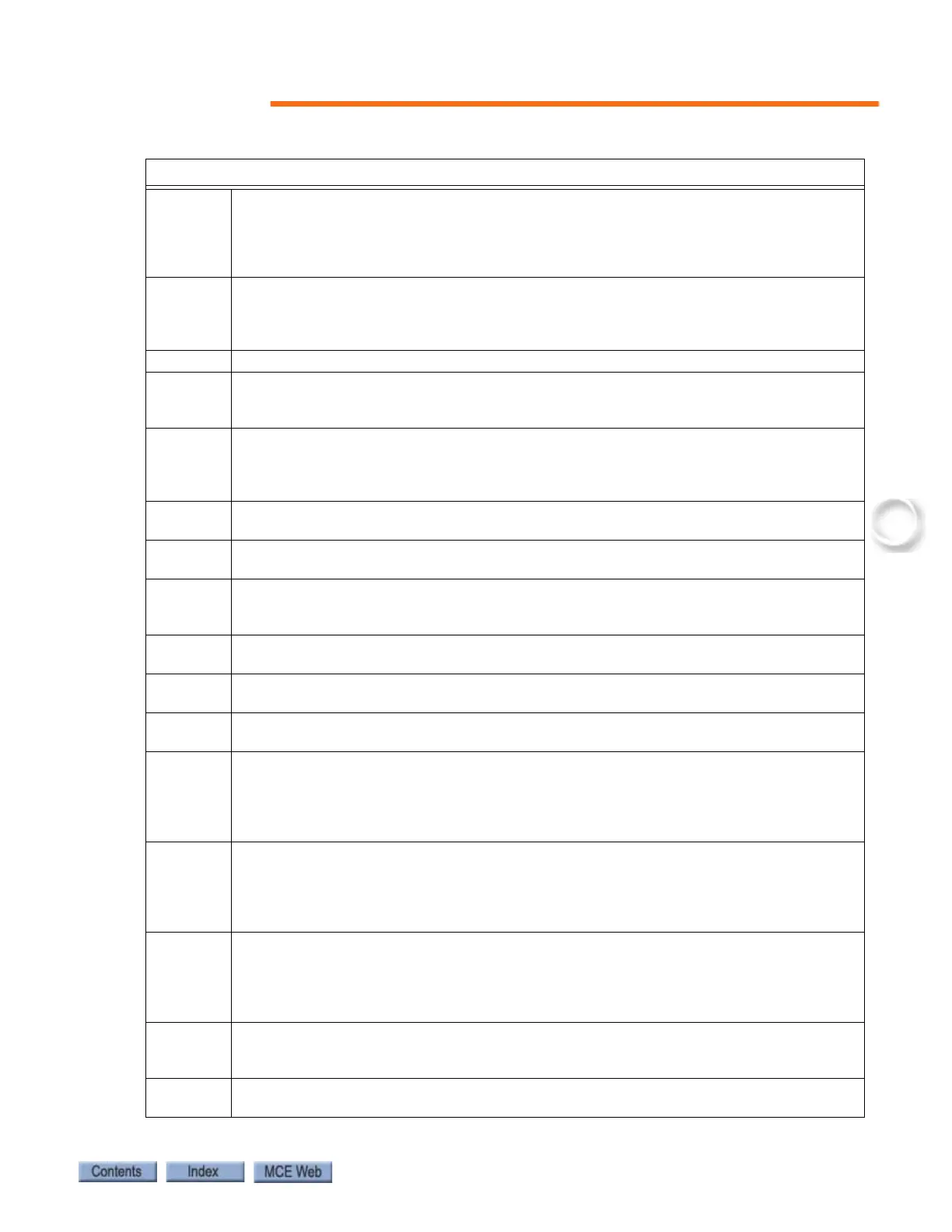F1: Program Mode
5-45
HOSPH2 Hospital Emergency Phase 2 output - This output will remain ON, indicating that the car
has arrived at the floor where the hospital call was registered, until the in-car hospital
switch is returned to normal or the time interval that the car must wait for the in-car
switch to be turned ON expires (see “HOSPITAL EMERG. OPERATION?” on page 5-50,
also see “HOSPITAL EMERG. TIMER” on page 5-27).
HSEL Hospital Emergency Select output - This output will remain steadily ON, indicating that
the car has been selected to answer a hospital call, until the in-car hospital switch is
turned ON or the time interval expires (see “HOSPITAL EMERG. TIMER” on page 5-27,
also see “HOSPITAL EMERG. OPERATION?” on page 5-50).
HUNL High speed up and not leveling. Informational output.
HWI Hospital Emergency Warning Indicator output - This output will remain steadily ON for a
car on Independent Service when a hospital emergency call is registered (see “HOSPITAL
EMERG. OPERATION?” on page 5-50).
INDFRC Independent Service/Fire Service Phase 2 Output - This output is used for elevators with
either single button collective or single automatic push button operation (see “OPERA-
TION:” on page 5-17). This output is used to disconnect hall calls during Fire Service and
Independent Service.
INDO Independent Service Output. Active when the elevator is running on Independent mode.
Typically used to drive an indicator light.
INSP Inspection. Active when the car is on Inspection operation (any inspection or access
mode).
ISRT In Service and Running Output - This output reflects the car’s ability to respond to hall
calls (the ISRT status). ISRT is active when the car’s status is such that it can answer hall
calls.
ISV In Service Output - This output reflects the status of the in-service flag (ISV) which indi-
cates that the car is in normal passenger mode of operation.
ISVF Flashing In-Service output - This output functions similar to the standard ISV output,
however the ISV output will flash whenever the car times out-of-service (see also ISV).
IUL In Use Light Output - This output activates when the car is in use, e.g., the car is in
motion or the doors are open.
LCTF Front photo eye cycle test output. When this output and the 2PHEF input are pro-
grammed, the front doors will not close until the front photo eye cycle test passes. Prior
to closing the front doors, the controller will generate the LCTF output so the door opera-
tor will cycle the front PHE inputs (Off to On, then On to Off). During this time, the front
PHE is disabled for normal operation. Only fire service bypasses this operation.
LCTR Rear photo eye cycle test output. When this output and the 2PHER input are pro-
grammed, the rear doors will not close until the rear photo eye cycle test passes. Prior to
closing the rear doors, the controller will generate the LCTR output so the door operator
will cycle the rear PHE inputs (Off to On, then On to Off). During this time, the rear PHE
is disabled for normal operation. Only fire service bypasses this operation.
LLW Light Load Weigher Output - This output reflects the light load status of the elevator. The
output is activated when the load in the elevator is less than the threshold set for light
load anti-nuisance (see “Load Weigher Thresholds” on page 5-63) or when the LLI input
is activated (see “LIGHT LOAD WEIGHING? / LIGHT LOAD CAR CALL LIMIT” on page 5-
48).
MISV Mechanically In Service Output - This output is normally active when the car is running
normally, but is turned off when the car appears to be mechanically out of service (as
indicated by the Safety String (SAF) and Motor Limit Timer (MLT).
MLT Motor Limit Timer Elapsed Output - This output is activated in two instances: when the
Motor Limit Timer Elapses, and when the EXMLT input is active (Hydro controller).
Table 5.7 Spare Outputs Menu Options
Spare Outputs Menu Options
